
Relaunching the Synchronize Platform in 3 Months Instead of a Year
Synchronize
Synchronize creates top-tier lectures in Russian on culture, history, and science. Despite awesome content, only 20% of users renewed their subscriptions. The culprit? A clunky platform.
We teamed up with Synchronize to relaunch their platform: built a new architecture, designed a slick user dashboard, and overhauled the content admin panel. Nailed it in just 3 months, when projects like this usually take 6 months to a year.
The Problem
Synchronize had a killer landing page, but things fell apart post-signup:
- Picking a course, paying, and finding it in the dashboard was a hassle.
- Search was so bad, you could binge a couple of TikToks before finding your course.
- No progress tracking—users couldn’t pick up videos where they left off. Some die-hard fans even jotted down timestamps in notebooks!
These tech issues tanked the business: 15% of subscribers never added a course, and only 20% renewed. In fall 2024, Tanya Lunina, Synchronization’s Product Director, reached out to FANS for a platform overhaul.
The Solution
A full platform relaunch with tons of user scenarios usually takes 6 months to a year. Synchronization wanted it fast—3 months max.
We dug into what we could realistically pull off in that time. After scoping the architecture, we zeroed in on three priorities:
Design a user-friendly dashboard with smooth navigation and a new video player.
Build a new architecture without breaking ties to promo pages, rolling it out in phases.
Revamp the content admin panel without building it from scratch due to the tight timeline.
To hit the deadline, we mapped out a week-by-week plan for three months. Dropped the first version in production right on time—February 3, 2025. Here’s how we built a Netflix-style hub for cultural content.
New User Dashboard Interface
Slick, user-friendly interfaces are key but tough to nail in a rush. To make it happen, MateÇa studio designers, our frontend and backend devs worked in parallel.
Designers and frontend devs synced up multiple times a week, sharing progress and hashing out what ideas were feasible, what they’d impact, and what to tweak in mockups. The client joined these sessions, helping us nail solutions for all user scenarios that we could realistically build in time.
Frontend stack: TypeScript, Vue, Pinia Colada.



Find your courses in one click instead of five.

Progress tracking works like Netflix—no more notebook scribbles.
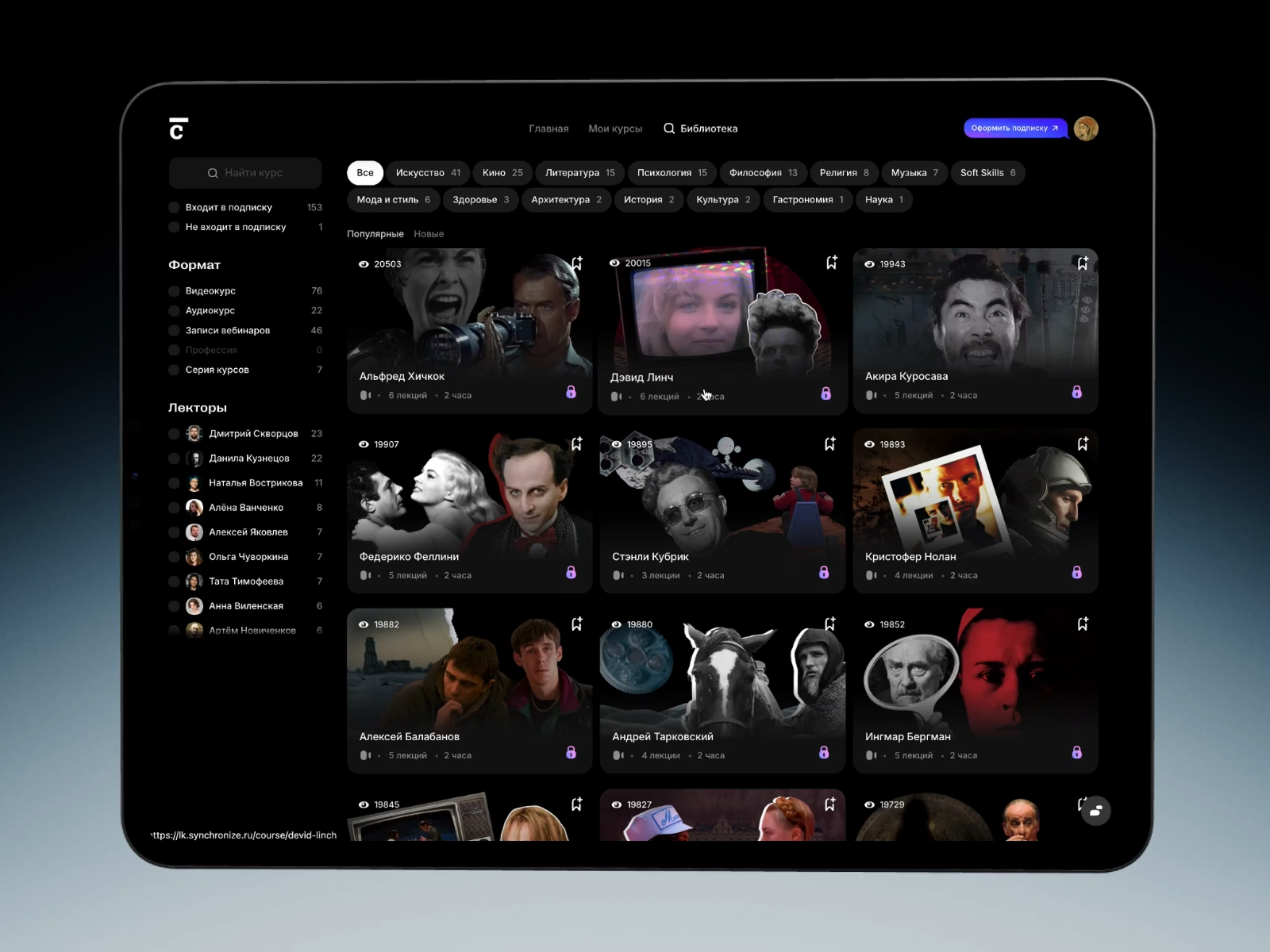
Ditched the generic LMS vibe for a sleek dark mode interface, perfect for evening viewing.
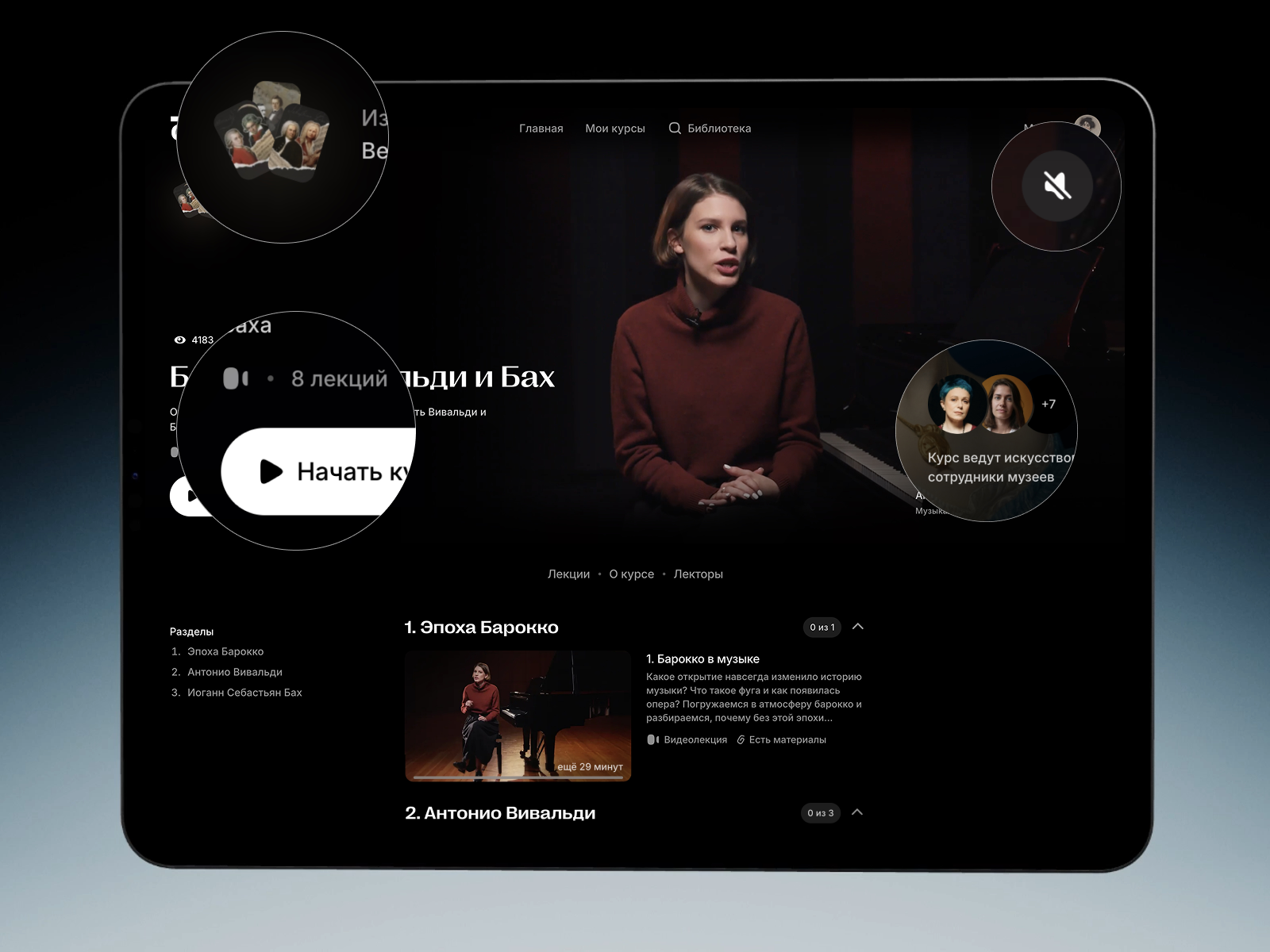
Designers poured love into details: fonts, varied card formats, custom icons, smooth animations, clear tooltips. Frontend devs brought it all to life with precision.
Component-Based Development
While working on interfaces, we leaned into component-based development. Pages were assembled only after coding and approving elements in a library.
Product idea

Design

Component coding

Review with designers and client

Component optimization

Page assembly
Component-based development isn’t typical for MVPs—it’s usually for big, stable projects. But with tight deadlines and parallel design-frontend work, assembling pages from pre-built components was a game-changer.
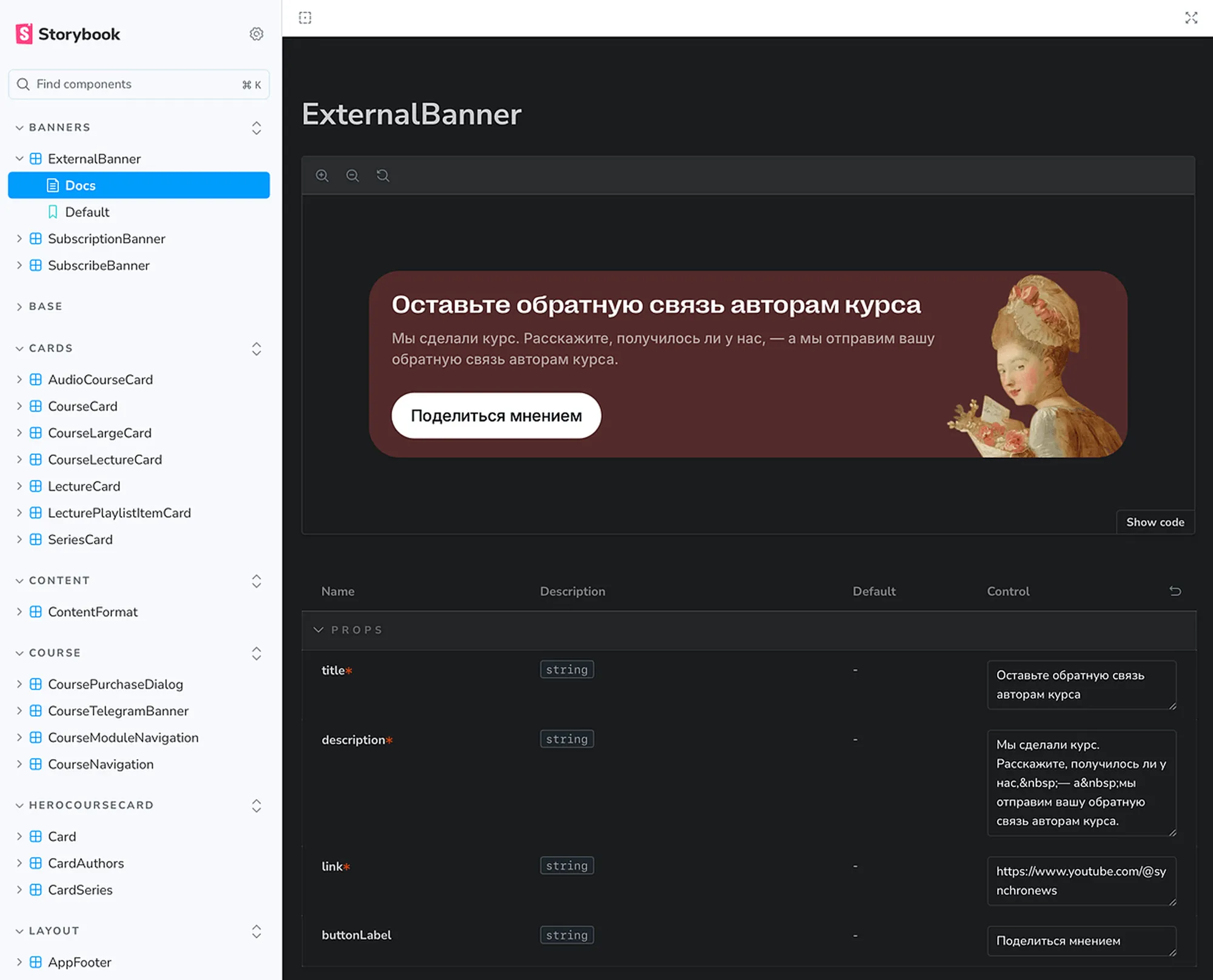
Example: A dynamic banner reused across multiple pages.
Post-project, Synchronize got a robust, tested component library, speeding up future projects like mobile apps.
New Architecture
Synchronize’s old setup was a messy mix of off-the-shelf tools and custom code. Pre-built solutions weren’t flexible and—worst of all—didn’t save viewing progress. Tough to compete with Netflix or YouTube’s one-click resume.
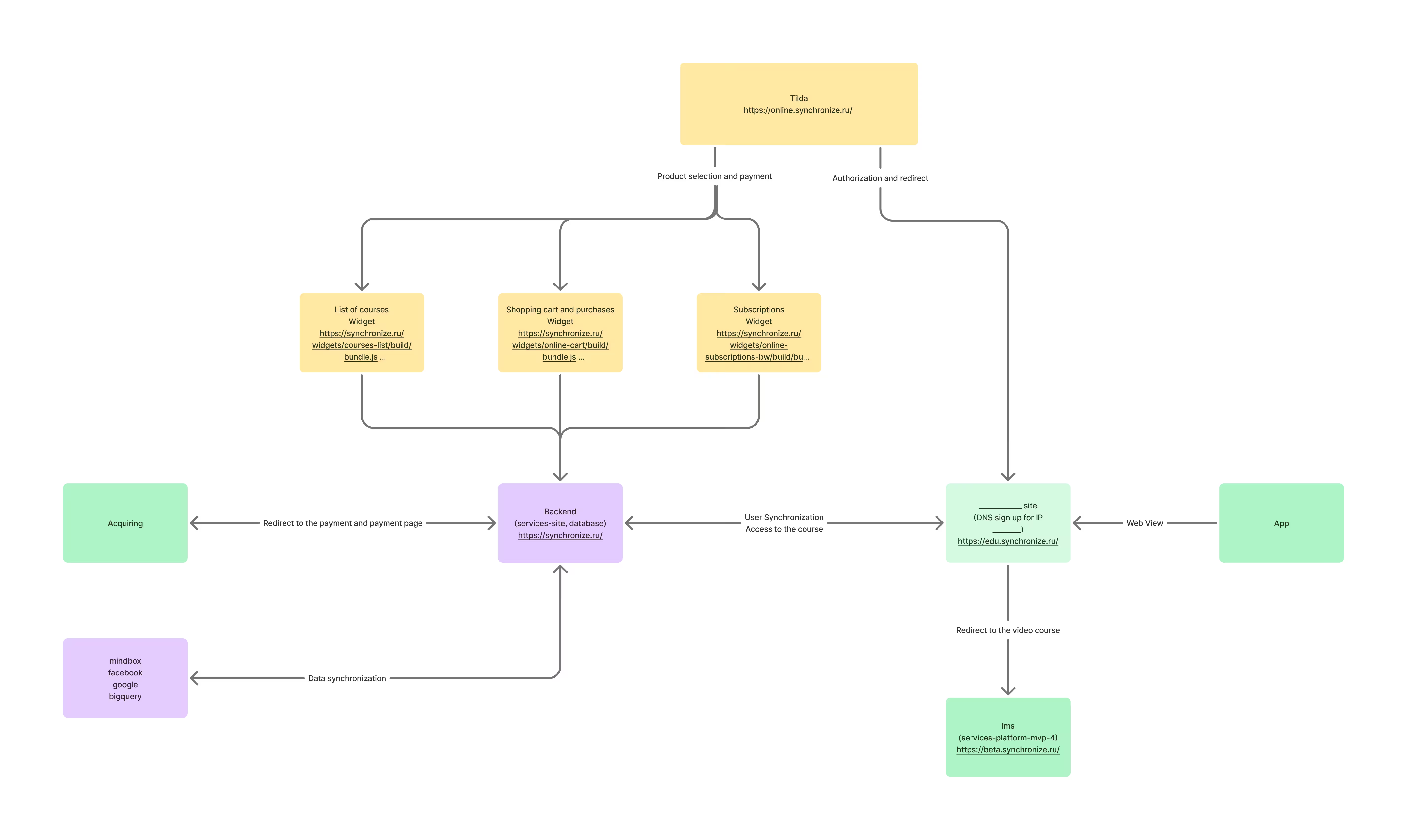
Old Architecture Diagram
Swapping the entire engine at once was too risky—if the new platform flopped, the business would take a hit. So, the new architecture runs old and new systems in parallel. We also ensured old promo page links stayed intact and smoothly handled data for purchases, subscriptions, and refunds.
Video is Synchronize’s core. Building our own video delivery system and player would’ve been pricey and impractical. We integrated Kinescope, a ready-to-go video platform, but designed the integration to let Synchronization switch vendors painlessly if needed.
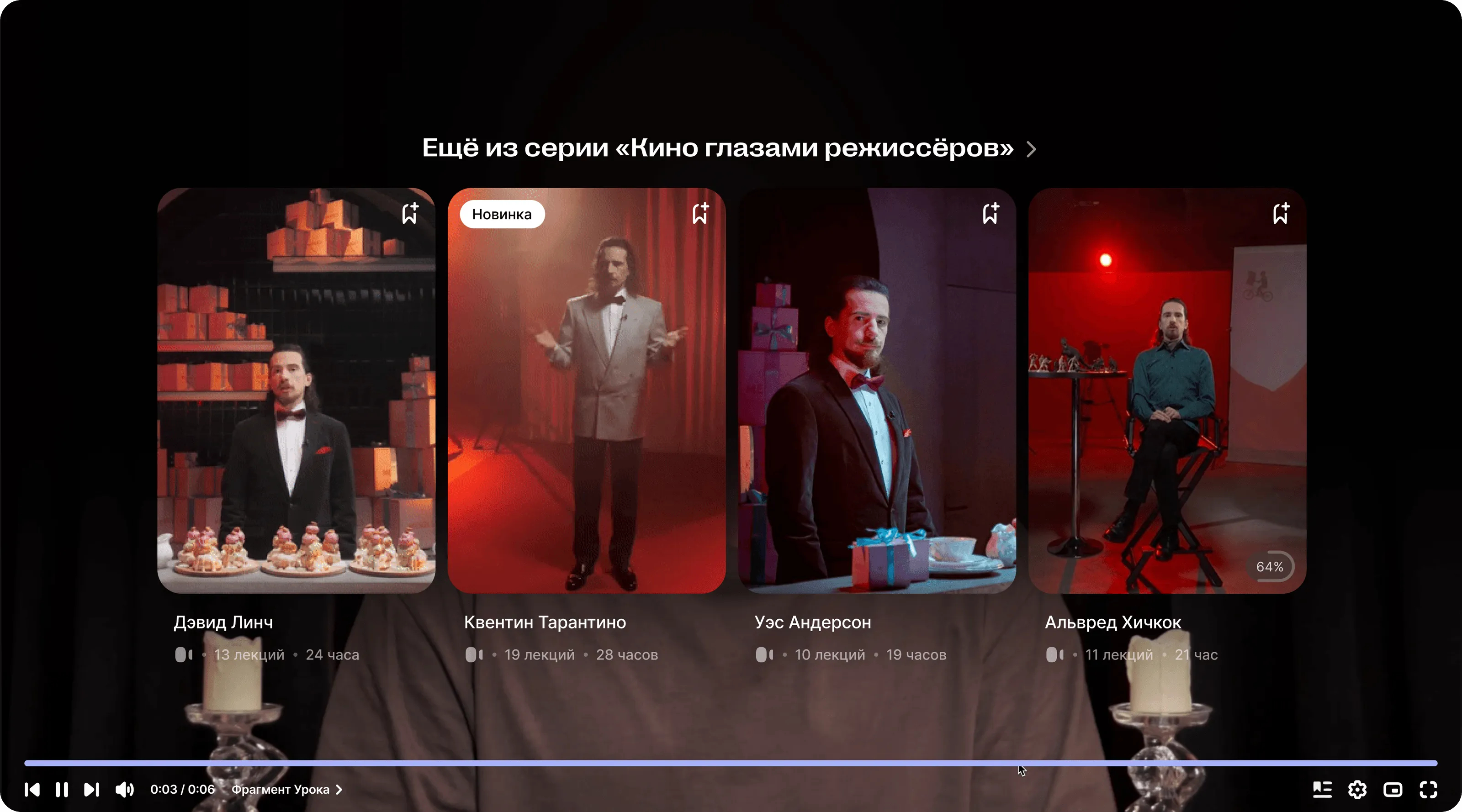
Phased Rollout
The new architecture enabled a dream feature: phased rollout. We first opened the platform to loyal users, gathering real-world feedback and fixing bugs. If something broke, users could switch back to the old version, keeping the business safe.
The new system is future-proofed with flexibility: courses can be split into paid stages, and the homepage is modular—adding a new backend block with custom logic now takes hours. We planned not just for today but for cost-effective growth tomorrow.
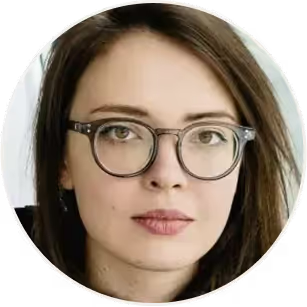
Product Director
«The new architecture lets us build products we didn’t even plan for in the original spec. Its flexibility means we can roll out almost any idea just through the admin panel.
For example, we added a free course with scheduled lecture unlocks—a scenario we hadn’t even discussed at the start. It’s awesome.»
Simple, Effective Admin Panel
The old content admin panel was a confusing mess. Building a new one from scratch would’ve taken at least six weeks.
We helped Synchronize define admin panel requirements to keep data mostly tabular. This let us use Django’s standard admin panel, shaving at least a month off development. If data or needs get complex later, they can build a custom admin panel—like we did for Webium.
Content managers got a powerful tool with features like versioning, with almost no extra dev costs.

Product Directo
«FANS didn’t just nod along with our ideas—they pushed back on bad ones, clearly explaining why they’d be inefficient or unreliable, which we really valued. But they stayed open to compromises, even if it meant stepping outside their usual stack or wasn’t perfect.
For example, partial redirects to the old platform, integrating a recurring payment widget, pulling points from the old system—these aren’t the most elegant solutions, but they saved us time and money, and most importantly, they work.
The team wasn’t afraid to go beyond the original plan, adding details like rotating avatars, a random image picker for the login page, cute empty states, and thank-you pages. These were spontaneous ideas, not tied directly to business goals, but they got built when there was bandwidth. And FANS didn’t inflate timelines or dump extra tasks on us.»
Results
Synchronize now has a live product, CI/CD pipelines, processes, and their own tech team. We sourced candidates from the client’s network and our Strong Programmers School grads. We handled technical interviews, the client checked for culture fit, and suitable hires joined the team as we phased out our devs.
Product analytics show the relaunch boosted Synchronize’s business metrics—proof the overhaul paid off.
OLD WEBSITE
NEW WEBSITE
GROWTH (%)
3-day retention
33%
37%
+12.12%
7-day retention
23%
30%
+30.43%
3-day stickness (DAU/MAU * 100)
32%
37%
+15.63%
7-day stickness (DAU/MAU * 100)
22%
30%
+36.36%
Purchase-to-use conversion (day)
55%
87%
+58.18%
Purchase-to-use conversion (week)
66%
91%
+37.88%
Why It Worked
Nailed the MVP Scope:
Agreed with the client upfront on a lean product, avoiding a year-long “rebuild everything” trap.
Met Halfway:
When the client wanted changes mid-project, we accommodated where possible. They reciprocated, accepting simpler solutions if features would take too long.
One Team Vibe:
Synchronize’s designer joined our design studio, and our devs picked up mockups mid-sprint, staying in lockstep with their product lead.
Smart Shortcuts:
Used Kinescope instead of building a video host and Django’s admin panel instead of a custom one to save time.
What’s Next?
1
Mobile App Launch
Built a full-fledged mobile app for offline lecture viewing, using web tech to reuse site code and save months of dev time.
2
Course Store Revamp
The client loved our speedy product launches and wants to redo their public course store with us.
3
Data-Driven Dashboard Growth
Set up analytics with tools like Mixpanel and Amplitude for Synchronize’s team to evolve the dashboard.
The Team
FANS
Fedor Borshev,
Samat Galimov
Technical Directors
Alexey Chudin
Architect
Eduard Stepanov,
Daniil Maltsev
Backend Developers
Mikhail Burmistrov
Frontend Lead
Andrey Batsunov,
Eduard Aksamitov,
Alexander Nesterov
Frontend Developers
Alexander Prikhodko,
Adel Shaikhutdinova
Project Managers
MateÇa
Kirill Tarelkin
Design Director
Andrey Kotov
Product Designer
Synchronize
Maria Borodetskaya
CEO
Tatiana Lunina
CPO
Nikita Gordeev
Product Analyst
Alena Nizikova
IT Projects Lead
Taisia Prokhorova
Client Service Team Lead
Alina Nagorneva
Product Designer
Azamat Kanatov
Junior IT Project Manager
Vyacheslav Viktorov
Developer
Ekaterina Nenakhova
Editor
Other Projects
Logistics SaaS
Platform
Platform
ERP for managing international freight
Built and rolled out dashboards for logisticians, company execs, and clients, automating and streamlining core operations.

Relaunch of the Chaika Clinic Information System
Designed a medical information system for a premium clinic chain, based on the international FHIR protocol.

Relaunch of the Webium Educational Platform
Created one of the best LMS platforms in the US online education market, handling thousands of teachers and hundreds of thousands of students daily.


